Trying Out These 20 High-Protein Foods With Low Calories
Nourishing your body with a nutrient-rich diet is essential for maintaining good health. Consuming foods low in calories but high in protein can aid in weight management and promote muscle growth.
According to experts, the suggested amount of protein is usually between 10 and 35% of one’s total daily caloric intake. The minimum daily requirement is 0.8 grams (g) for every kilogram (kg) of body weight to prevent deficiencies. However, recent studies have shown that consuming 1.2 g of protein per kilogram daily can assist in reducing muscle and bone loss associated with ageing. Research indicates that healthy adults can handle a daily protein intake of 2 g per kilogram or even higher.1
This list comprises 20 food options that are both low in calories and high in protein, including animal- and plant-based alternatives. These choices suit individuals who want to fulfil their dietary requirements without exceeding their calorie intake. Most of these foods have a serving size of less than 200 calories.
1. Ground Beef, Lean
According to the Dietary Guidelines of the United States, it is recommended to vary the protein sources in one’s diet and to choose low-fat or lean options, such as lean beef. A 3-ounce broiled ground beef with 93% lean content contains 162 calories and 22.3 grams of protein. This amount provides 50% of the recommended zinc intake, which supports the immune system, and 13% of the daily value for iron. Iron is essential for producing haemoglobin, a protein that carries oxygen in the blood.
2. Trimmed Beef Cut
Even though steak may not be the first choice for those seeking lean protein options, lean cuts of steak can still be found. For example, broiled beef flank steak with trimmed fat is a good option. A serving of 3 ounces contains 172 calories and 23.5 grams of protein. It also provides essential B vitamins, including vitamin B3, which comprise 40% of the recommended daily value and are crucial in converting food into energy.
3. Pork Roast
Incorporating pork into a high-protein, low-calorie diet can be beneficial, but choosing lean cuts to reduce calorie intake is important. Opting for cuts like pork tenderloin or pork loin chops is recommended. A 3-oz pan-broiled centre loin pork chop contains 138 calories and 25.5 g of protein, as well as significant levels of zinc (13% DV), vitamin B1 (43% DV), and vitamin B12 (22% DV).
4. Turkey without Skin
Choose skinless turkey as a regular source of protein and save the skin-on and gravy-topped turkey for special occasions. Opting for a 3-oz serving of roasted turkey breast (meat only) provides 125 calories and 25.6 g of protein, with 63% and 40% of the daily values for vitamins B3 and B6, respectively. This information can be found on Health.com under the articles “Turkey Benefits” and “Niacin Deficiency Symptoms.”
5. Boneless Chicken Breast without Skin
The boneless and skinless chicken breast is cost-effective and adaptable, providing 133 calories and 27.3 g of protein in a 3-oz portion when braised. In addition to being a good source of B vitamins, chicken also offers 49% of the recommended daily value for selenium. This essential nutrient helps protect the body from oxidative damage and infections.
6. Whites of Eggs
These days, it is simple to locate liquid egg whites or powdered egg whites in their dehydrated form. By separating the nutrient-dense yolk from an egg, you are essentially left with just the protein, reducing calories. A single ounce of dehydrated egg whites contains 107 calories and 22.7 g of protein.13
7. Milk with Reduced Fat or No Fat
Not just limited to breakfast cereals, milk can be enjoyed as a versatile option for snacks, meals, or even blended into a smoothie. A cup of 2% non-fat milk contains either 122 or 84 calories, respectively, providing 8 grams of protein. In addition to being a good source of calcium and vitamin D, milk is also rich in essential nutrients like zinc, vision-supporting vitamin A, and potassium.
8. Cottage Cheese with Reduced Fat
For individuals looking for a low-calorie and high-protein cheese, low-fat cottage cheese is a great option. A one-cup serving provides 180 calories and 24.2 g of protein, along with 17% of the recommended daily intake for calcium and 26% for phosphorus, which are crucial for maintaining healthy bones.
9. Mozzarella Cheese from Park-Skim Facility
When looking for cheese to add to meals without increasing calorie intake, many people turn to part-skim mozzarella. One ounce of this cheese contains 82.6 calories and 6.66 grams of protein, making it a popular choice. Additionally, it provides 15% and 12% of the recommended daily values for calcium and phosphorus, respectively.
10. Reduced-Fat or Fat-Free Plain Greek Yogurt
Greek yoghurt is created by removing whey from regular yoghurt, resulting in a thicker consistency and more protein. This type of yoghurt also contains bacteria cultures that assist in breaking down lactose, but in smaller amounts, which may make it a more suitable choice for individuals with lactose intolerance.
According to the nutrition information, a 200-gram (7-oz) serving of unflavored low-fat Greek yoghurt contains 146 calories and 19.9 g of protein, whereas a 100-gram portion of non-fat Greek yoghurt provides 100 calories and 17.3 g of protein. This data was reported in the year 1920.
11. Fish That Are White
White fish, such as cod, haddock, and flounder, typically have a gentle taste and a delicate texture. They have a lower calorie content compared to oily fish like salmon. For instance, a 127-gram fillet of flounder or sole cooked using dry heat contains 109 calories and 19.3 g of protein.
Fish, overall, is an excellent source of omega-3 fatty acids, particularly DHA and EPA, that play a crucial role in maintaining the health of the brain and heart. 22
12. Shrimp
A 3-oz cooked portion of shrimp has a low-calorie count of only 84 but packs a high amount of protein at 20.4 g, making it a great choice for those looking to consume low-calorie and high-protein foods. Like white fish, shrimp is considered a low-mercury seafood, and seafood is a good source of healthy omega-3 fats.23
13. Preserved Light Tuna in a Can
In a 3-oz serving, canned light tuna provides 16.5 g of protein and only 73.1 calories, making it a low-calorie option. It is also considered a low-mercury seafood choice, similar to white fish and shrimp, and contains beneficial nutrients such as omega-3 fats, iron, and choline, which is important for brain health.
14. Legumes
According to the source, Beans, peas, and lentils are all legume family members, including plant-based foods that grow in pods. These legumes are a good source of protein for individuals looking for non-meat options. They also provide a significant amount of fibre and important nutrients such as B vitamins and potassium.25
A single serving of low-sodium canned black beans contains 218 calories, 14.5 g of protein, and an impressive 16.6 g of fibre, meeting 59% of the recommended daily fibre intake. This information is based on the daily value of fibre.
15. Peas
A one-cup cooked serving of peas contains 134 calories and 8.58 g of protein. It also provides 8.8 g of fibre (equivalent to 31% of the daily value), which is crucial in promoting gut health. Adequate fibre intake has been linked to reducing cholesterol levels, managing blood sugar, and aiding in weight management.
16. Legumes
According to research, lentils are small and flat legumes available in various colours, such as red, brown, and green. A 100-gram (3.5-ounce) serving of cooked lentils contains 116 calories, 9.02 g of protein, and 7.9 g of fibre. Additionally, it is rich in nutrients like copper and manganese, which provide 28% and 21% of the recommended daily value for these minerals that support the immune system, respectively.
17. Edamame,
According to the source, Edamame, which refers to young and green soybeans, has a higher protein content compared to other legumes. This nutritious food can be found in the fresh produce section or the frozen vegetables aisle. A serving of one cup of edamame that has been prepared from frozen contains 188 calories, 18.4 g of protein, 8.06 g of fibre, and provides 20% of the daily recommended intake for iron, totaling 325 nutrients.
18. Soybean Curd
Tofu is a plant-based protein made from soybeans. It is available in various textures, from silken to extra firm, making it suitable for various cooking techniques. A serving of 1/2 cup of firm tofu, made with calcium sulfate, contains 98.3 calories and 11.4 grams of protein and meets 19% of the recommended daily intake for calcium.33
19. Tempeh
Tempeh, produced through the fermentation of soybeans, is considered a high-protein plant-based alternative and can be used as a substitute for meat in plant-based meals. A serving of 100 grams (3.5 oz) of cooked tempeh contains 195 calories and 19.9 g of protein. This amount also meets 20% and 56% of the recommended daily intake for phosphorus and manganese, essential for energy production and maintaining strong bones.
20. Quinoa
Quinoa is a popular gluten-free grain high in protein, providing 222 calories, 8.14 grams of protein, and 5.18 grams of fibre per cooked cup. Additionally, it is a plentiful source of magnesium, meeting 28% of the daily value. This nutrient is essential for various bodily functions, such as maintaining nerve and muscle health and regulating blood pressure and blood sugar levels.
Despite having a higher calorie count than other foods on this list, quinoa stands out for its considerable amount of fibre. Foods high in fibre can help promote a sense of satiety, which can assist in managing calorie and portion intake.
Advantages of Following a High-Protein, Low-Calorie Diet
Consuming a diet with high protein levels, regardless of calorie intake, can be a safe and successful method for losing weight and potentially preventing obesity and its associated health issues. This type of diet can increase hormones responsible for controlling appetite while decreasing those that stimulate it, resulting in a sense of satiety and ultimately reducing calorie consumption. (37)
The breakdown and metabolism of protein require a higher amount of energy, resulting in an increased calorie burn. Furthermore, protein aids in maintaining fat-free mass, such as skeletal and muscle mass, which is essential for reducing the effects of age-related bone and muscle decline.
Those looking to lose weight or manage their weight may find a low-calorie and high-protein diet beneficial. This diet may be particularly advantageous for older individuals trying to maintain their muscle mass and combat age-related bone and muscle loss. As people age, they often experience a decreased appetite, resulting in fewer calories. Furthermore, those who tend to feel full quickly may find it beneficial to focus on incorporating high-protein, low-calorie foods into their diet to ensure they are getting adequate nutrition.
Ideas for Meal Plans
Below are some suggestions for balanced meals incorporating the aforementioned foods:
- If they want to lose weight or manage their weight, they may find a low-calorie and high-protein diet
- A combination of Greek yoghurt, a mix of berries, and a sprinkle of nuts or seeds
- Scrambled egg whites with spinach and shredded part-skim mozzarella cheese
weight - A high-protein smoothie made with milk, frozen fruits, and protein powder
- A salad of quinoa and grilled chicken with mixed greens, tomatoes, cucumber, and avocado
- A wrap made with black beans, grilled tofu, hummus, lettuce, and shredded carrots
- A hearty soup made with lentils, shrimp, and vegetables, served with whole-grain crackers
- Turkey meatballs served with spaghetti, marinara sauce, and a side salad
- Roasted pork loin chops with potatoes, carrots, and bell peppers
- Fish tacos topped with shredded cabbage, diced tomatoes, guacamole, and a squeeze of lime juice.
Brief Overview
By including a diverse selection of the previously mentioned foods in your low-calorie, high-protein diet, you can add variety to your meals while also obtaining a spectrum of vital nutrients. This includes incorporating plant-based alternatives such as soy products and peas and animal-based options like meat, seafood, and dairy. There are numerous tasty and nourishing options available to discover.
A well-balanced diet that includes a variety of protein sources, along with fruits, vegetables, whole grains, and healthy fats, can promote overall health and well-being, regardless of your objectives, such as weight management, muscle preservation, or chronic disease prevention.







